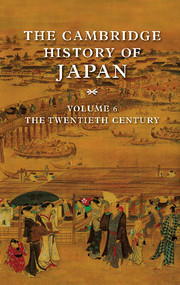5 - The Japanese colonial empire, 1895–1945
from PART II - EXTERNAL RELATIONS
Published online by Cambridge University Press: 28 March 2008
Summary
CIRCUMSTANCES AND MOTIVATIONS
Japan's rise as a colonial power stands as an anomaly in the history of modern imperialism, one that can be understood only in the context of Japan's historical and geographic circumstances and the world events in the latter half of the nineteenth century. Launched in the high noon of the “new imperialism,” the Japanese colonial empire was to a large extent formally patterned after the tropical empires of modern Europe. Yet, as the only non-Western imperium of modern times, Japan's overseas empire stood apart from its European counterparts, its circumstances scarcely duplicated elsewhere.
The first and most arresting aspect of the Japanese empire is the fact that the metropolitan homeland itself only narrowly escaped colonial subjugation, surviving as one of the four Asian nations (along with China, Siam, and Korea) to escape obliteration in the flood of Western dominance in the nineteenth century. As it was, Japan's emergence as a colonial power in the late 1890s came just as the nation was extricating itself from the unequal treaty system imposed three decades earlier by the Western powers. The reasons for this remarkable phenomenon– the pull of other Asian opportunities on aggressive Western energies at mid-century and the revolutionary transformation of Japan from a weak, feudal, and agrarian country into a modern industrial power economically and militarily capable of resisting foreign domination– have been so extensively explored in this and other histories that they need no repetition here. What does require reemphasis is that both historical timing and an overriding concern for national security were basic to the initial direction of Japanese expansion.
- Type
- Chapter
- Information
- The Cambridge History of Japan , pp. 215 - 270Publisher: Cambridge University PressPrint publication year: 1989
References
- 9
- Cited by

